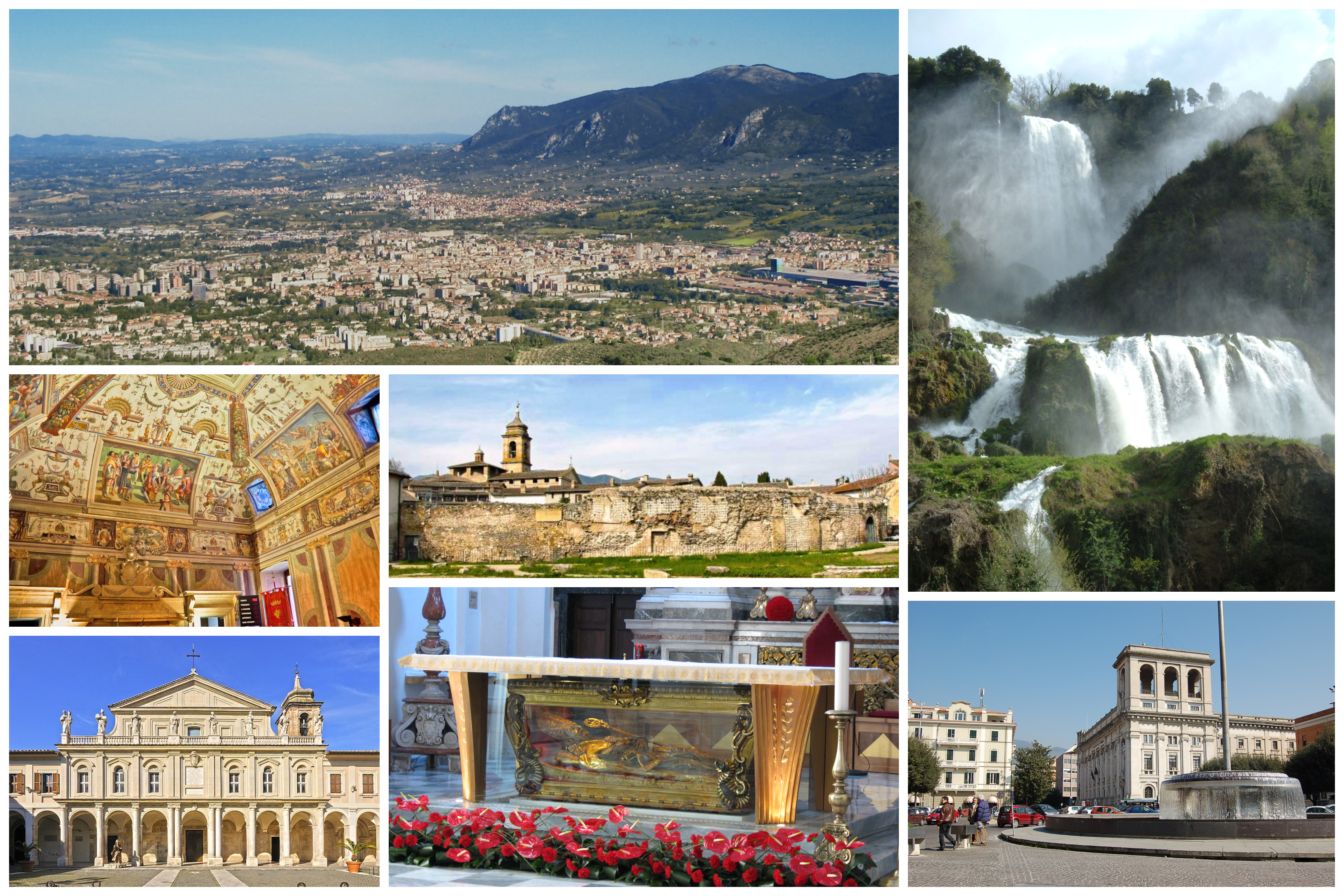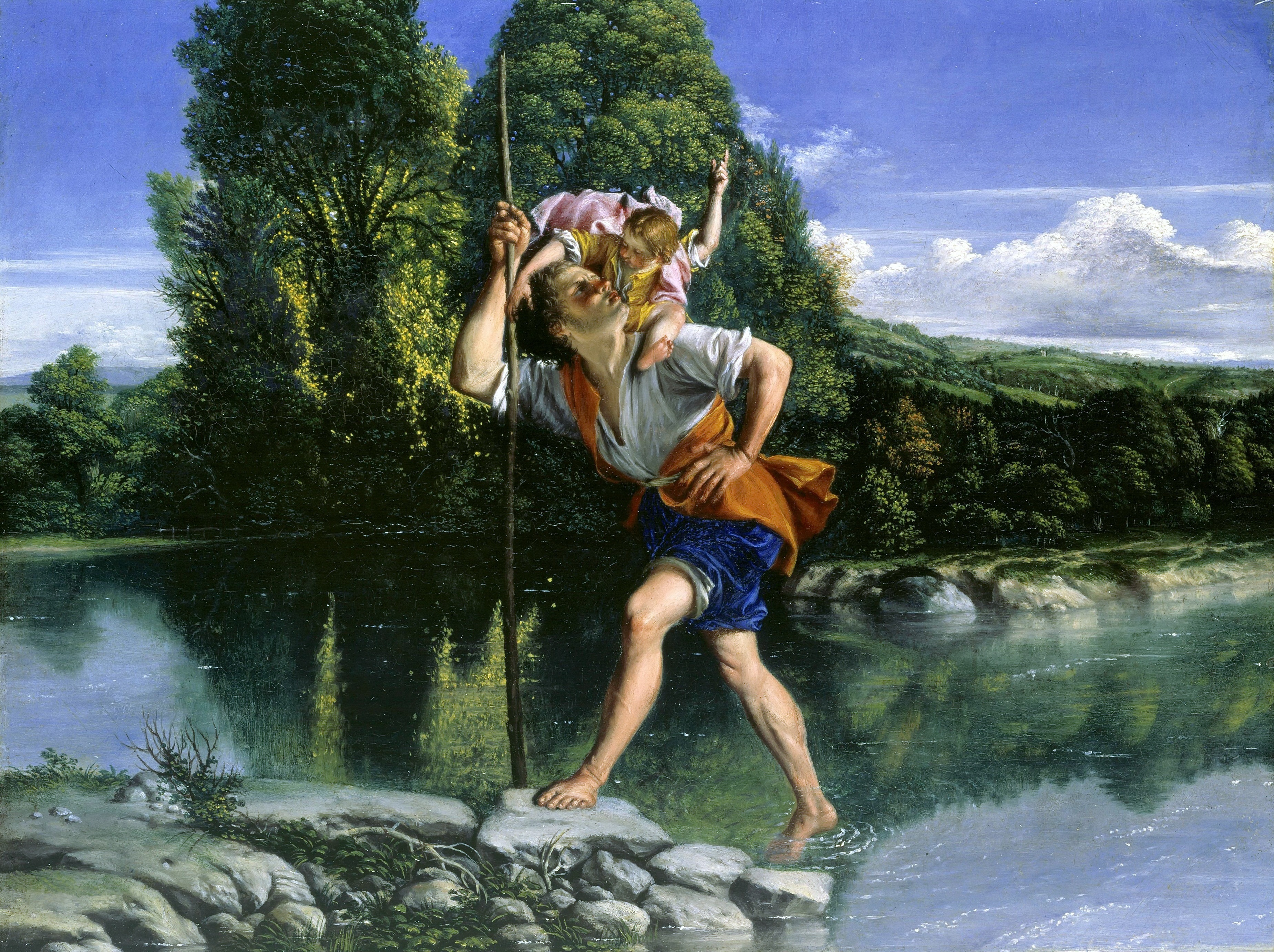|
San Cristoforo, Terni
San Cristoforo is a 12th-century Roman Catholic church in Terni, region of Umbria, in Italy. Francis of Assisi is putatively said to have preached from atop a stone at the right flank of the church, now housing a bronze sculpture of the saint. It is in the Diocese of Terni-Narni-Amelia. History The small simple church is made from stone bricks, likely spolia, and has a single nave with fragments remaining of 14th and 15th century frescoes. There is also a triptych with St Christopher Saint Christopher (, , ; ) is venerated by several Christian denominations. According to these traditions, he was a martyr killed in the reign of the 3rd-century Roman emperor Decius (), or alternatively under the emperor Maximinus Daia (). ..., while a 17th-century canvas depicting the church's patron in housed in the adjacent modern church building. [...More Info...] [...Related Items...] OR: [Wikipedia] [Google] [Baidu] |
Terni
Terni ( ; ; ) is a city in the southern portion of the region of Umbria, in Central Italy. It is near the border with Lazio. The city is the capital of the province of Terni, located in the plain of the Nera (Tiber), River Nera. It is northeast of Rome and 81 km south of the regional capital, Perugia. The Latin name means "between-two-rivers", in reference to its location on the confluence of the Nera river (Umbrian language, Ancient Umbrian ''Nahar'', ) and the Serra stream. When disambiguation was needed, it was referred to as ''Interamna Nahars''. Its inhabitants were known in Latin as ''Interamnātēs Na(ha)rtēs''. Interamna was founded as an Ancient Roman town, albeit settlements in the Terni area well precede this occurrence. During the 19th century, steel mills were introduced and led the city to have a role in the Second Industrial Revolution in Italy. Because of its industrial importance, the city was heavily bombed during World War II by the Allies of World War I ... [...More Info...] [...Related Items...] OR: [Wikipedia] [Google] [Baidu] |
Province Of Terni
The province of Terni () is the smaller of the two provinces in the Umbria region of Italy, comprising one-third of both the area and population of the region. Its capital is the city of Terni. The province came into being in 1927, when it was carved out of the original unitary province of Umbria. The province of Terni has an area of 2,122 km2 and a population of 228,836 (2016). There are 33 ''comuni'' (: ''comune'') in the province. In June 2006, the only ''comuni'' (municipalities) with a population over 10,000 were , , |
Umbria
Umbria ( ; ) is a Regions of Italy, region of central Italy. It includes Lake Trasimeno and Cascata delle Marmore, Marmore Falls, and is crossed by the Tiber. It is the only landlocked region on the Italian Peninsula, Apennine Peninsula. The regional capital is Perugia. The region is characterized by hills, mountains, valleys and historical towns such as the university centre of Perugia, Assisi (a World Heritage Site associated with Francis of Assisi, St. Francis of Assisi), Terni, Norcia, Città di Castello, Gubbio, Spoleto, Orvieto, Todi, Castiglione del Lago, Narni, Amelia, Umbria, Amelia, Spello and other small cities. Geography Umbria is bordered by Tuscany to the west and the north, Marche to the east and Lazio to the south. Partly hilly and mountainous, and partly flat and fertile owing to the valley of the Tiber, its topography includes part of the central Apennine Mountains, Apennines, with the highest point in the region at Monte Vettore on the border of Marche, a ... [...More Info...] [...Related Items...] OR: [Wikipedia] [Google] [Baidu] |
Roman Catholic
The Catholic Church (), also known as the Roman Catholic Church, is the largest Christian church, with 1.27 to 1.41 billion baptized Catholics worldwide as of 2025. It is among the world's oldest and largest international institutions and has played a prominent role in the history and development of Western civilization. O'Collins, p. v (preface). The church consists of 24 ''sui iuris'' (autonomous) churches, including the Latin Church and 23 Eastern Catholic Churches, which comprise almost 3,500 dioceses and eparchies around the world, each overseen by one or more bishops. The pope, who is the bishop of Rome, is the chief pastor of the church. The core beliefs of Catholicism are found in the Nicene Creed. The Catholic Church teaches that it is the one, holy, catholic and apostolic church founded by Jesus Christ in his Great Commission, that its bishops are the successors of Christ's apostles, and that the pope is the successor of Saint Peter, upo ... [...More Info...] [...Related Items...] OR: [Wikipedia] [Google] [Baidu] |
Saint Christopher
Saint Christopher (, , ; ) is venerated by several Christian denominations. According to these traditions, he was a martyr killed in the reign of the 3rd-century Roman Empire, Roman emperor Decius (), or alternatively under the emperor Maximinus Daia (). Churches and monasteries were named after him by the 7th century. There is no evidence for the historicity of the saint.Britannica, The Editors of Encyclopaedia. "Saint Christopher" Encyclopedia Britannica, 25 July 2024, https://www.britannica.com/biography/Saint-Christopher. Accessed 25 October 2024. The most famous legend connected to the saint recounts that after converting to Christianity, he devoted his life to carrying travelers across a river. One day he carried an unknown young boy across a river after which the boy reve ... [...More Info...] [...Related Items...] OR: [Wikipedia] [Google] [Baidu] |
Roman Catholic Diocese Of Terni-Narni-Amelia
The Diocese of Terni-Narni-Amelia () is a Latin Church ecclesiastical territory or diocese of the Catholic Church in Umbria, central Italy. It was created in 1983, when the Diocese of Amelia was united with the Diocese of Terni and Narni. The latter had been in turn created in 1907, when the Diocese of Narni was united to the historical Diocese of Terni. (for Chronology of Bishops) (for Chronology of Bishops) The diocese is immediately exempt to the Holy See, not part of any ecclesiastical province. History Terni is the ancient Interamna Nahars of the Umbrians, and the cathedral, and other churches, are built on the sites of pagan temples. After the Lombard invasion, Terni belonged to the Duchy of Spoleto, and with the latter, came into the Pontifical States. It was at Terni that Pope Zacharias entered into the agreement with King Luitprand for the restitution of the cities of Bieda, Orte, Bomarzo, and Amelia to the Duchy of Rome. It is believed that the gospel ... [...More Info...] [...Related Items...] OR: [Wikipedia] [Google] [Baidu] |
Italy
Italy, officially the Italian Republic, is a country in Southern Europe, Southern and Western Europe, Western Europe. It consists of Italian Peninsula, a peninsula that extends into the Mediterranean Sea, with the Alps on its northern land border, as well as List of islands of Italy, nearly 800 islands, notably Sicily and Sardinia. Italy shares land borders with France to the west; Switzerland and Austria to the north; Slovenia to the east; and the two enclaves of Vatican City and San Marino. It is the List of European countries by area, tenth-largest country in Europe by area, covering , and the third-most populous member state of the European Union, with nearly 59 million inhabitants. Italy's capital and List of cities in Italy, largest city is Rome; other major cities include Milan, Naples, Turin, Palermo, Bologna, Florence, Genoa, and Venice. The history of Italy goes back to numerous List of ancient peoples of Italy, Italic peoples—notably including the ancient Romans, ... [...More Info...] [...Related Items...] OR: [Wikipedia] [Google] [Baidu] |
Francis Of Assisi
Giovanni di Pietro di Bernardone ( 1181 – 3 October 1226), known as Francis of Assisi, was an Italians, Italian Mysticism, mystic, poet and Friar, Catholic friar who founded the religious order of the Franciscans. Inspired to lead a Christianity, Christian life of poverty, he became a Mendicant, beggar and itinerant preacher. One of the most venerated figures in Christianity, Francis was canonized by Pope Gregory IX on 16 July 1228. He is commonly portrayed wearing a brown Religious habit, habit with a rope tied around his waist, featuring three knots symbolizing the evangelical counsels of poverty, chastity, and obedience. In 1219, he went to Egypt in an attempt to convert the sultan al-Kamil and put an end to the conflict of the Fifth Crusade. In 1223, he arranged for the first live nativity scene as part of the annual Christmas celebration in Greccio. According to Christian tradition, in 1224 Francis received the stigmata during the Vision (spirituality), apparition of ... [...More Info...] [...Related Items...] OR: [Wikipedia] [Google] [Baidu] |
Spolia
''Spolia'' (Latin for 'spoils'; : ''spolium'') are stones taken from an old structure and repurposed for new construction or decorative purposes. It is the result of an ancient and widespread practice (spoliation) whereby stone that has been quarried, cut and used in a built structure is carried away to be used elsewhere. The practice is of particular interest to historians, archaeologists and architectural historians since the gravestones, monuments and architectural fragments of antiquity are frequently found embedded in structures built centuries or millennia later. The archaeologist Philip A. Barker gives the example of a late Roman period (probably 1st-century) tombstone from Wroxeter that could be seen to have been cut down and undergone weathering while it was in use as part of an exterior wall and, possibly as late as the 5th century, reinscribed for reuse as a tombstone. Overview The practice of spoliation was common in late antiquity. Entire structures, including under ... [...More Info...] [...Related Items...] OR: [Wikipedia] [Google] [Baidu] |
Nave
The nave () is the central part of a church, stretching from the (normally western) main entrance or rear wall, to the transepts, or in a church without transepts, to the chancel. When a church contains side aisles, as in a basilica-type building, the strict definition of the term "nave" is restricted to the central aisle. In a broader, more colloquial sense, the nave includes all areas available for the lay worshippers, including the side-aisles and transepts.Cram, Ralph Adams Nave The Catholic Encyclopedia. Vol. 10. New York: Robert Appleton Company, 1911. Accessed 13 July 2018 Either way, the nave is distinct from the area reserved for the choir and clergy. Description The nave extends from the entry—which may have a separate vestibule (the narthex)—to the chancel and may be flanked by lower side-aisles separated from the nave by an arcade. If the aisles are high and of a width comparable to the central nave, the structure is sometimes said to have three nave ... [...More Info...] [...Related Items...] OR: [Wikipedia] [Google] [Baidu] |
12th-century Roman Catholic Church Buildings In Italy
1 (one, unit, unity) is a number, numeral, and glyph. It is the first and smallest positive integer of the infinite sequence of natural numbers. This fundamental property has led to its unique uses in other fields, ranging from science to sports, where it commonly denotes the first, leading, or top thing in a group. 1 is the unit of counting or measurement, a determiner for singular nouns, and a gender-neutral pronoun. Historically, the representation of 1 evolved from ancient Sumerian and Babylonian symbols to the modern Arabic numeral. In mathematics, 1 is the multiplicative identity, meaning that any number multiplied by 1 equals the same number. 1 is by convention not considered a prime number. In digital technology, 1 represents the "on" state in binary code, the foundation of computing. Philosophically, 1 symbolizes the ultimate reality or source of existence in various traditions. In mathematics The number 1 is the first natural number after 0. Each natural numbe ... [...More Info...] [...Related Items...] OR: [Wikipedia] [Google] [Baidu] |



